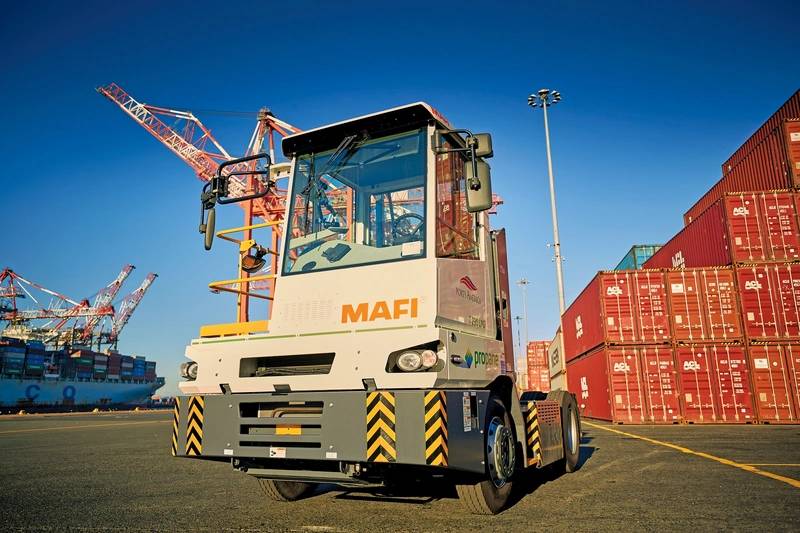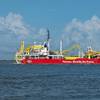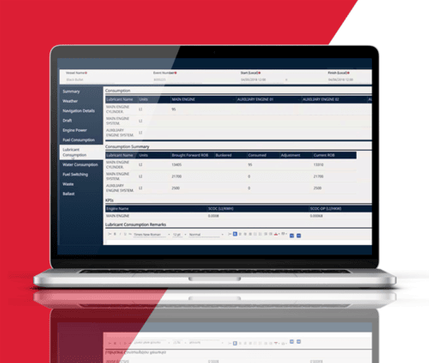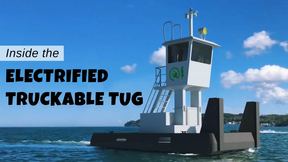How Propane Can Help Ports Meet Emissions Goals
Ports can’t afford to slow down, and stricter environmental regulations and emissions standards are pushing port authorities to balance operational efficiency with reducing their carbon footprint. By replacing traditional gas and diesel as an energy source, propane can help ports reduce emissions and air pollution without sacrificing power or efficiency. Let’s explore how.
Reduced Emissions
Propane is non-toxic and won’t contaminate soil or water. A byproduct of natural gas processing and sometimes crude oil refining, propane is recognized for its lower emissions profile compared to fuels like gas and diesel. In fact, propane is listed as an approved alternative fuel under the Clean Air Act. When used in engines to power port tractors, forklifts, light- and medium-duty vehicles, and more around port terminals, propane emits significantly fewer greenhouse gases, nitrogen oxides (NOx), and particulate matter than diesel and gas.
Here are some examples:
Propane Port Tractors
- In terminal tractors and light-duty vehicles, propane produces 12 percent fewer greenhouse emissions than gasoline.
- Terminal tractors produce 99 percent less particulate matter than diesel tractors.
 (Photo: Propane Education & Research Council)
(Photo: Propane Education & Research Council)
Propane Forklifts
- Propane forklifts reduce greenhouse gas emissions by up to 16 percent compared with gasoline-fueled forklifts.
- Propane forklifts produce up to 94 percent fewer nitrogen oxide (NOx) emissions than diesel.
- Propane forklifts produce up to 76 percent fewer sulfur oxide (SOx) emissions than electric-powered forklifts when well-to-wheel emissions are considered.
Renewable Propane
Propane is an even cleaner fuel source when made from renewable sources. Renewable propane is made from a variety of feedstocks, including camelina plant oil, vegetable oil, animal fats, used cooking oil, soybean oil, and animal tallow.
At the point of combustion, the carbon intensity score of renewable propane is four times lower than conventional propane and five times lower than diesel. In fact, it is net carbon neutral and does not contribute to elevated atmospheric carbon levels. Coupled with being affordable and efficient, renewable propane is helping ports meet environmental goals now.
Reliability and Affordability
Propane’s sustainability is only one part of the picture that port operators need to consider. Even the most environmentally friendly energy sources will fall flat if they are not reliable and affordable. Propane has a proven track record of reliability, used for decades across industries that cannot afford downtime. Propane is portable and can be stored on site without degrading over time, ensuring it is always accessible regardless of severe weather or power grid interruptions.
As domestic propane production continues to grow rapidly, prices are also expected to be consistently lower on average than gas and diesel prices. Propane can beat diesel on price per gallon by as much as 50 percent, and the U.S. produces more than enough propane to meet demand.
Propane: A Path Forward
As sustainability becomes a bigger focus for port authorities, and as environmental regulations continue to become more stringent and complex, a mix of various clean energy sources will be required. Propane can help to maintain port operations’ efficiency and reliability, while meeting emissions standards. Propane is a clean-burning alternative to gasoline and diesel that can address energy challenges now and into the future.













